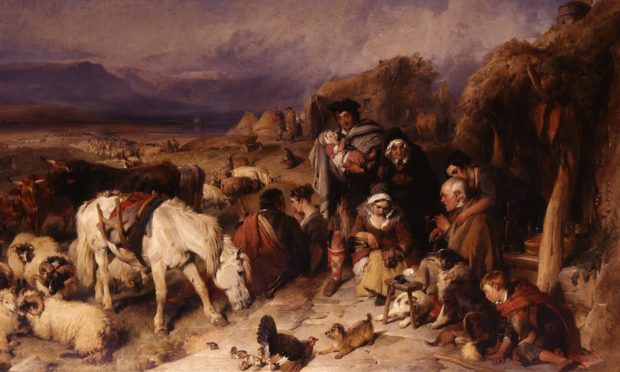Millions of pounds linked to slavery was used to buy huge swathes of land in the west Highlands and Islands, research published today reveals.
The new study exposes the extent of the historical connection between land ownership in the region and plantation slavery in the Caribbean and North Africa.
It also highlights how many estate owners were prominent in the infamous Highland Clearances which saw thousands of people evicted from the land.
The research by two university academics shows that 63 estates, amounting to almost 1.2 million acres and covering 33.5% of the west Highlands and islands, were acquired using the equivalent of more than £120 million by beneficiaries of “slavery derived wealth”.
The majority – 37 estates – changed hands between 1790 and 1855, the main period of the infamous Clearances.
The independent study ‘Plantation Slavery and Landownership in the west Highlands and Islands: Legacies and Lessons’ was written by Coventry University-based Dr Iain MacKinnon, from Skye, and Dr Andrew Mackillop, a senior lecturer in Scottish History at Glasgow University, from Harris.
It is being published by Community Land Scotland which represents community landowners and it is hoped will encourage debate on Scotland’s slavery links.
It provides the first systematic analysis of the location and size of estate purchases financed by slavery money. This derived from involvement in the slave trade and/or the plantations themselves; or from compensation paid by the British Government when slavery was abolished in most of the British Empire.
An Act of Parliament in 1833 provided £20 million compensation to slave owners – more than £16 billion today. The equivalent of over £120 million of that figure was spent buying the Highland estates studied.
It says certain traditional landowners who inherited their Highland land also benefited from slavery money.
The Mackenzies of Gairloch, Macleod of Macleod and the House of Sutherland, had married into slavery-derived wealth. Cameron of Locheil and Mackintosh of Mackintosh also “appear to have been directly involved in the plantation economy in Jamaica.” In the 1880s these families together held at least 690,313 acres in the counties of Ross and Inverness.
The authors calculate that at least 5,000 people were cleared from the land by this new ‘slavery elite’. However, the figure would have been far higher as the study was restricted to the Hebrides from Islay northwards and the western coast of the counties of Inverness and Ross.
Examples of evictors include Colonel John Gordon of Cluny who cleared more than 2,900 people from Uist and Barra.
Dr MacKinnon said: “It is now clear that returning wealth from Atlantic slavery had an important impact on landownership change in the West Highlands and Islands in the 19th century and contributed significantly to the development of extractive and ecologically damaging forms of land use – whether this was commercial extraction through sheep farming, or status extraction through membership of what has been called the ‘hunting cult’ of the Victorian era in which many social elites were involved.”
Dr Mackillop added: “The report highlights how events, peoples and places that are distant to us in time or in geography are still closely intertwined with Highland history and the present-day condition of that part of Scotland.
“It demonstrates how this intersection between slavery-derived wealth and landed property and power was particularly evident during the most intensive phase of the Highland Clearances in the 1830s to 1860s.
“In pointing out this connection the report is seeking to encourage informed debate over the tangled legacies of Scottish society’s substantial and sustained involvement in slavery within the British Empire.”
Dr Calum MacLeod, Community Land Scotland’s policy director, said: “The report is an important contribution to our collective understanding of how slavery-derived wealth helped sustain and shape the pattern of monopoly private landownership in the north west Highlands and Islands that persists to this day.”










